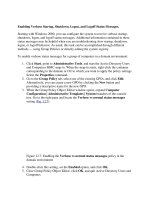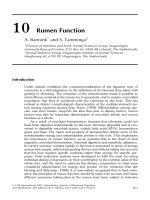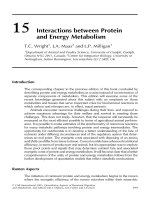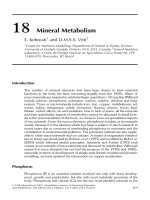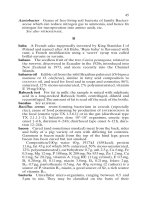Tài liệu Enabling Verbose Startup, Shutdown, Logon, and Logoff Status Messages doc
Bạn đang xem bản rút gọn của tài liệu. Xem và tải ngay bản đầy đủ của tài liệu tại đây (14.66 KB, 2 trang )
Enabling Verbose Startup, Shutdown, Logon, and Logoff Status Messages.
Starting with Windows 2000, you can configure the system to receive verbose startup,
shutdown, logon, and logoff status messages. Additional information contained in these
status messages may be helpful when you are troubleshooting slow startup, shutdown,
logon, or logoff behavior. As usual, this task can be accomplished through different
methods — using Group Policies or directly editing the system registry.
To enable verbose status messages for a group of computers in a domain environment:
1. Click Start, point to Administrative Tools, and start the Active Directory Users
and Computers MMC snap-in. When the snap-in starts, right-click the container
corresponding to the domain or OU to which you want to apply the policy settings.
Select the Properties command.
2. Go to the Group Policy tab, select one of the existing GPOs, and click Edit.
Alternatively, you can create a new GPO by clicking the New button and
providing a descriptive name for the new GPO.
3. When the Group Policy Object Editor window opens, expand Computer
Configuration | Administrative Templates | System branches of the console
tree. Go to the right pane and locate the Verbose vs normal status messages
setting (Fig. 12.7
).
Figure 12.7: Enabling the Verbose vs normal status messages policy in the
domain environment
4. Double-click this setting, set the Enabled option, and click OK.
5. Close Group Policy Object Editor, click OK, and quit Active Directory Users and
Computers.
Note Windows ignores this setting if the Remove Boot/Shutdown/Logon/Logoff status
messages setting is enabled (in Fig. 12.7
, this setting directly precedes the Verbose
vs normal status messages setting).
If you are using a standalone computer, or if you want to enable verbose status messages
on only one computer, the procedure is similar. In this case, however, you need to edit the
Verbose vs normal status messages setting under Local Security Policy | Computer
Configuration | Administrative Templates | System within local GPO. To do so, start
the Local Security Policy MMC snap-in. (For example, by clicking Start, selecting the
Run command and typing the gpedit.msc command into the Open field.)
As mentioned earlier, you can also enable verbose status messages by editing the registry.
To achieve this:
1. Start Regedit.exe (on Windows 2000 systems, use Regedt32.exe) and locate the
following registry key:
HKEY_LOCAL_MACHINE\SOFTWARE\Microsoft\Windows\CurrentVersion\P
olicies\System
2. Under this key, create a new DWORD value named verbosestatus, and set this
value to 1.
3. Quit Registry Editor.
Note Why would someone directly edit the registry when the same task can be performed
safely using the above-described GPO editing procedures, which reduce the chances
of human error? Even on the standalone systems and in a workgroup environment,
you can edit local security policy, which also reduces the chance of error and is
easier to use. However, direct registry editing retains its importance and can be
more convenient. For example, you may need to make changes to many systems in
a workgroup environment. Although applying a setting in local security policy is
safer than registry editing, this option is not feasible if you have to update several
thousands of Windows 2000/XP systems that are not joined to a domain. In this
case, modifying the registry makes more sense, especially if you are working
remotely.
Note Windows does not display status messages if the DisableStatusMessages value
entry (DWORD data type) is present under the same key and its value is set to 1.




